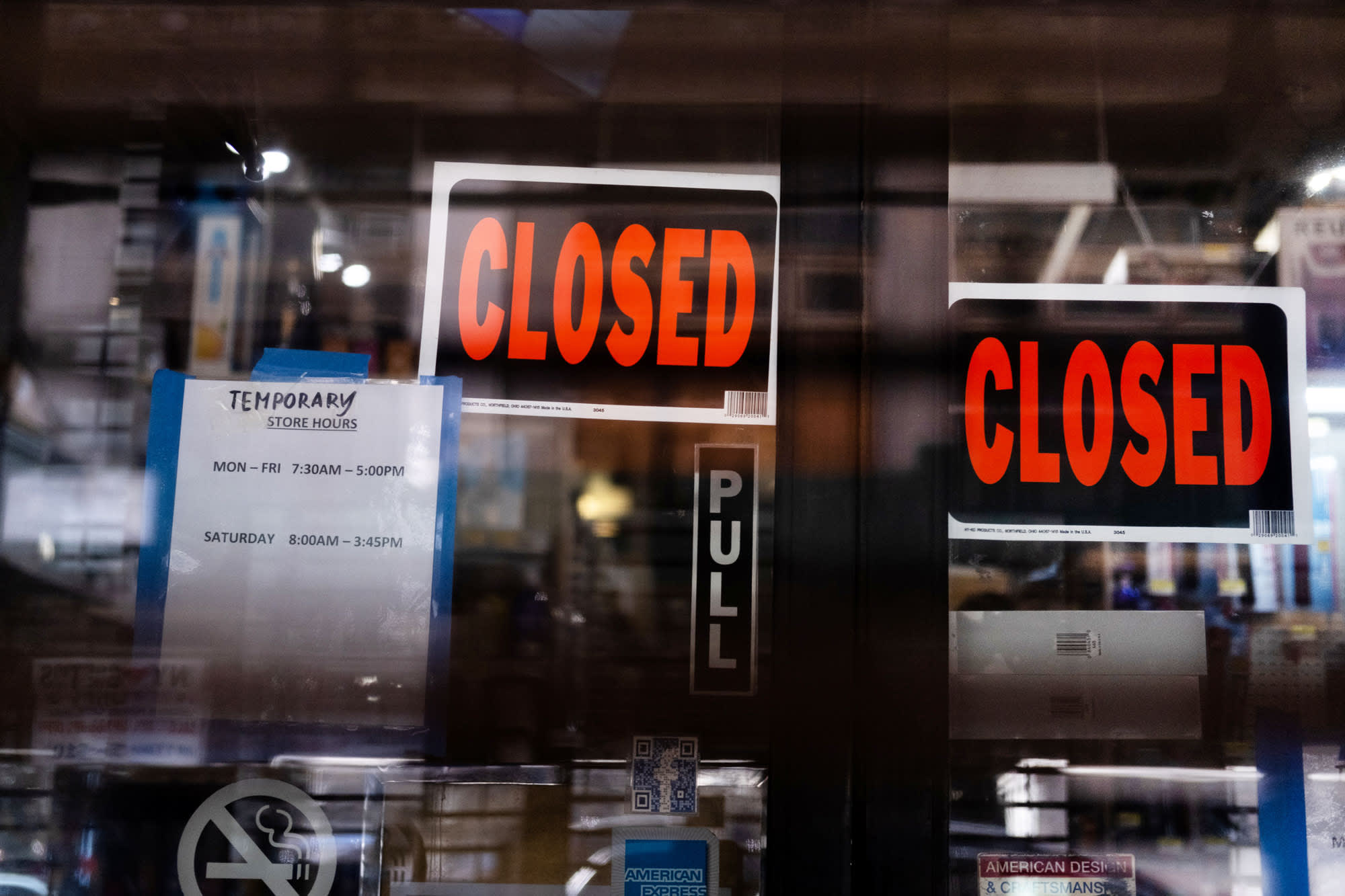The U.S. economy saw the biggest quarterly plunge in activity ever, though the plummet in the second quarter wasn’t as bad as feared.
Gross domestic product from April to June plunged 32.9% on an annualized basis, according to the Commerce Department’s first reading on the data released Thursday. Economists surveyed by Dow Jones had been looking for a drop of 34.7%.
Still, it was the worst drop ever, with the closest previously coming in mid-1921.
The report “just highlights how deep and dark the hole is that the economy cratered into in Q2,” said Mark Zandi, chief economist at Moody’s Analytics. “It’s a very deep and dark hole and we’re coming out of it, but it’ going to take a long time to get out.”
The report comes amid a recession that began in February and pulled first-quarter growth down 5%. On a quarterly basis, the Q2 decline was 1.8%.
Sharp contractions in personal consumption, exports, inventories, investment and spending by state and local governments converged to bring down GDP, which is the combined tally of all goods and services produced during the period.
Personal consumption, which historically has accounted for about two-thirds of all activity in the U.S., subtracted 25% from the Q2 total, with services accounting for nearly all that drop.
Spending slid in health care and goods such as clothing and footwear. Inventory investment drops were led by motor vehicle dealers, while equipment spending and new family housing took hits when it came to investment.
Prices for domestic purchases, a key inflation indicator, fell 1.5% for the period, compared with a 1.4% increase in the first quarter when GDP fell 5%, The personal consumption expenditures price index dropped 1.9% after rising a tepid 1.3% in Q1. Excluding food and energy, the “core” PCE prices were off 1.1%.
However, personal income soared, thanks in large part to government transfer payments associated with the coronavorus pandemic. Current-dollar personal income rose more than six-fold to $1.39 trillion, while disposable personal income shot up 42.1% to $1.53 trillion.
Despite the rise, personal outlays tumbled by $1.57 trillion, due in large part to a drop in services spending.
Imports added 10% to the total, offsetting the 9.4% pull from exports.
Historical perspective
“Bottom line, the numbers of course are alarming but all self inflicted with about half the quarter reflecting almost full shutdown and the other half the slow reopening,” said Peter Boockvar, chief investment officer at the Bleakley Advisory Group. “That said, it does reflect the hole out of which we now need to climb out of as we rebound in Q3 and Q4.”
Neither the Great Depression nor the Great Recession nor any of the more than three dozen economic slumps over the past two centuries have ever caused such a sharp drain over so short a period of time.
By comparison, the worst quarter during the financial crisis of 2008 was the 8.4% GDP drop in the fourth quarter of that year. The previous low-water mark was a 10% slide in the first quarter of 1958, while the worst in recorded history came in Q2 of 1921.
This particular tumble in activity owes to a different source than any of its predecessors: a government-induced shutdown aimed at combating a pandemic.
Workers across the country were told to stay home from any job not considered essential, resulting in a crushing halt that saw the unemployment rate peak at 14.7%, a post-Depression high. The National Bureau of Economic Research said the current recession actually started in February, a month before the pandemic declaration. First-quarter GDP fell 5%.
Also Thursday, the government reported that the number of Americans who filed new claims for unemployment benefits last week totaled 1.434 million. Although it was roughly in line with expectations, it was the 19th straight week in which initial claims totaled at least 1 million and the second consecutive week in which initial claims rose after declining for 15 straight weeks.



 breakout perfect entry #forex #crypto #trading #trending
breakout perfect entry #forex #crypto #trading #trending